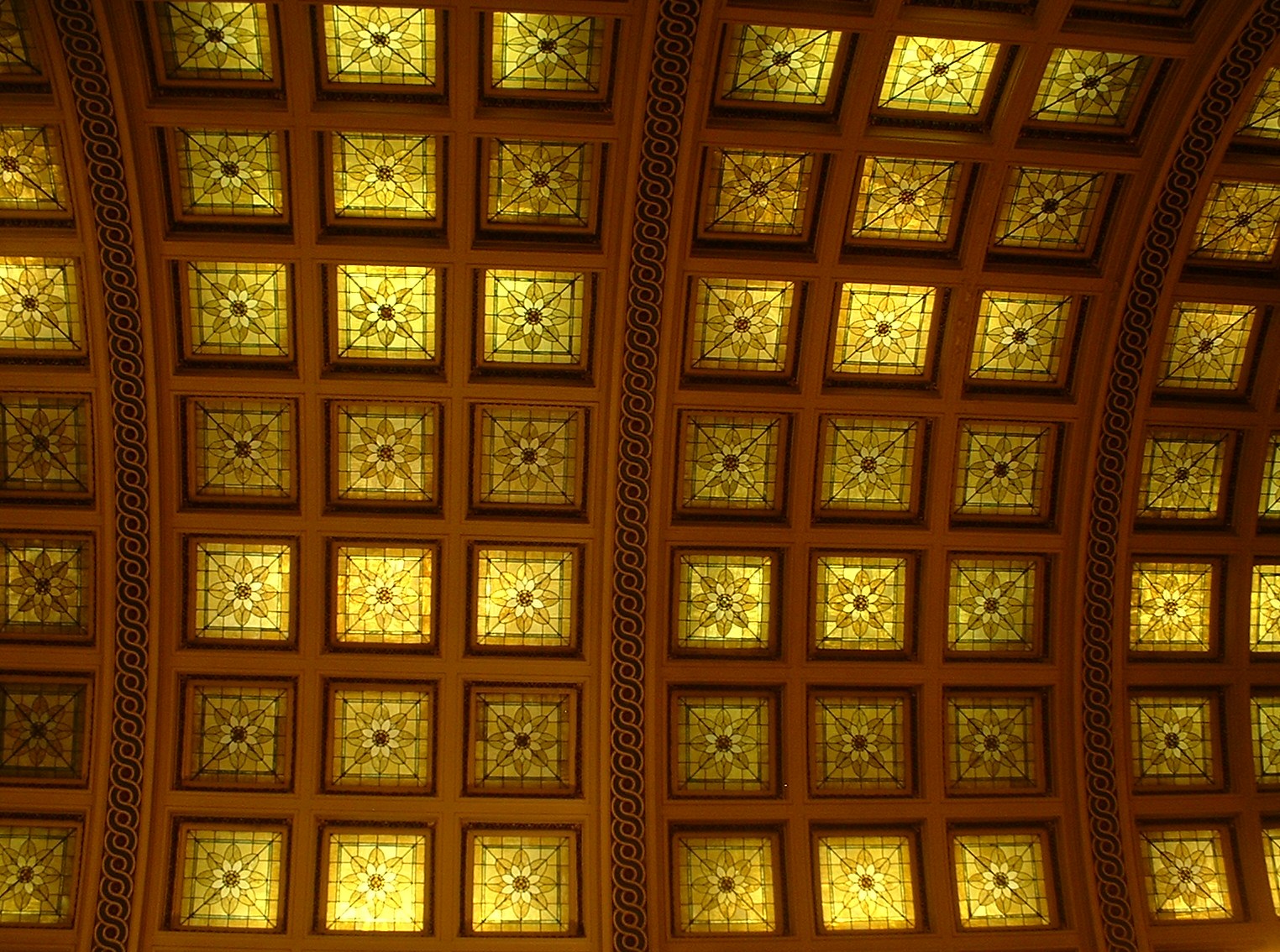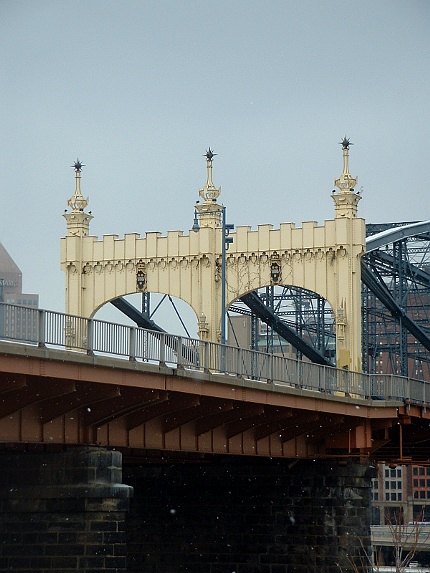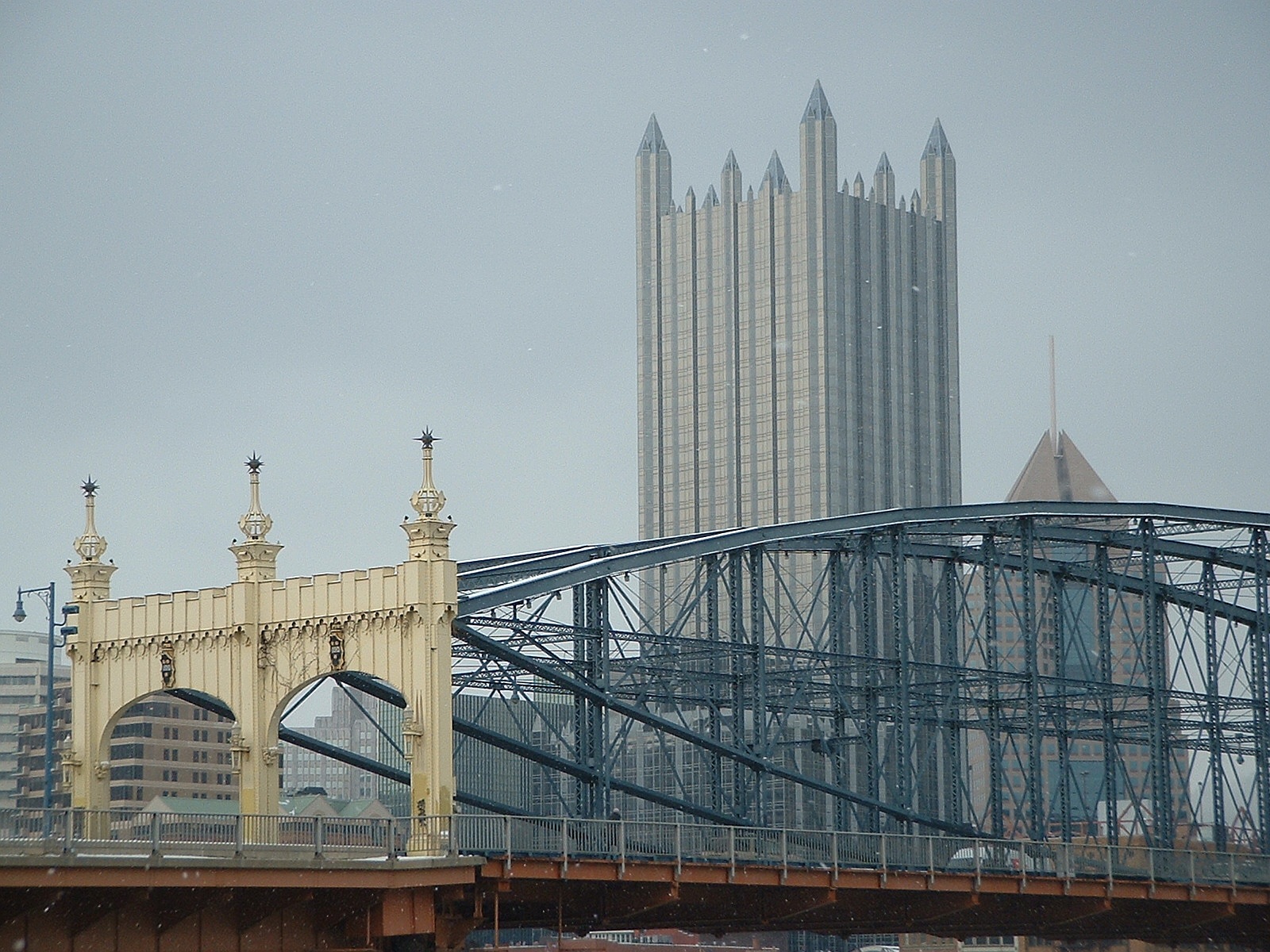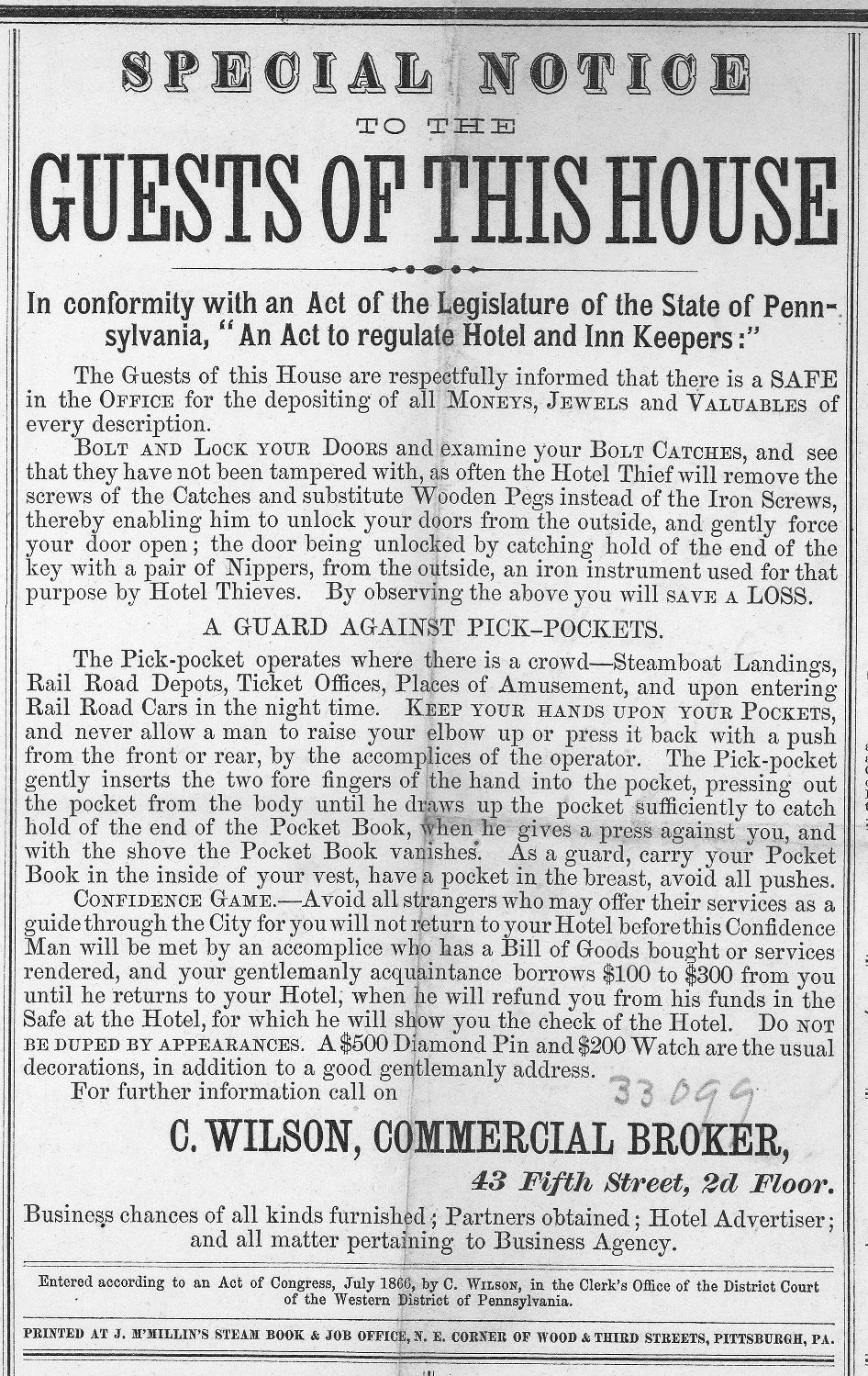
The Pittsburgh and Lake Erie Railroad (which never made it to Lake Erie, by the way) was a little fellow compared to the gargantuan Pennsylvania Railroad. But it made good money, and when it built this station in 1899, it showed that it could play with the big boys. The station cost three quarters of a million dollars, which was a tremendous amount in those days. (It still sounds like a good deal of money to old Pa Pitt.) The interior is madly luxurious, and nowhere more so than in the stained glass. Besides the glorious semicircular window at the western end, the entire ceiling of the grand concourse is stained glass.
Passenger trains no longer stop here (they stop downtown behind the old Pennsylvania Station), but the building has been gloriously restored and turned into the “Grand Concourse,” which must surely be the most architecturally impressive restaurant in the city.












